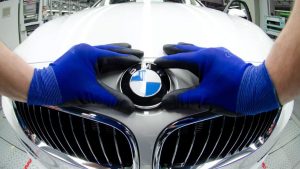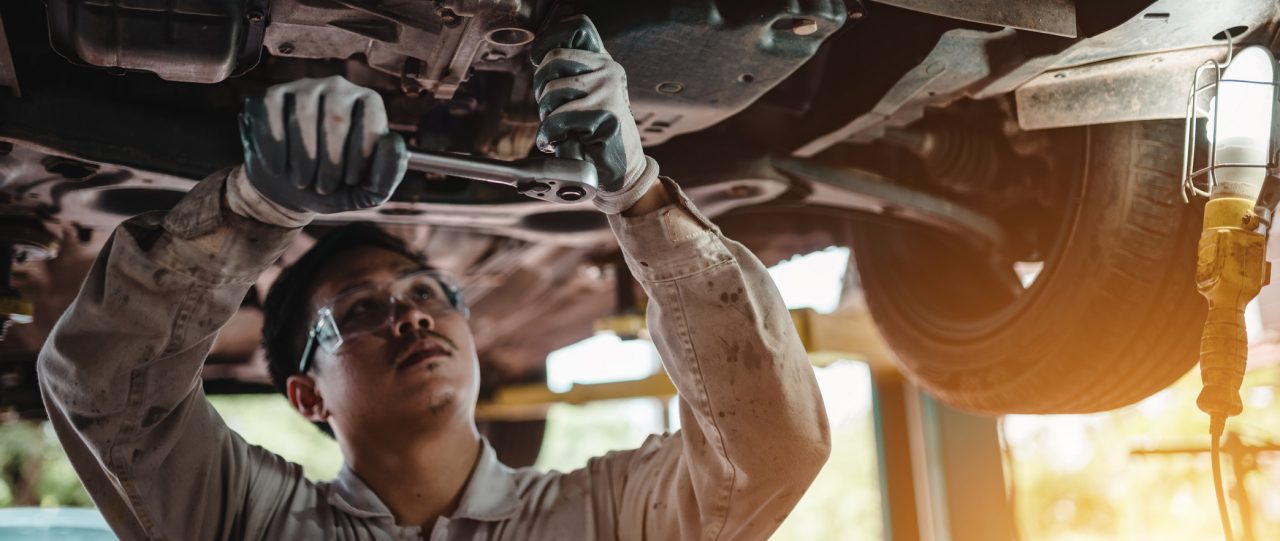Direct fuel injection is a very old idea
Until the early 2000s, direct injection was mainly associated with diesel engines. However, gasoline direct injection isn’t a new idea.
The first engine to use direct injection was a V8 aircraft engine created by Leon Levavasseur in 1902 – a hundred years before GDI became widely used in passenger cars.
Going forward, the first mass-produced gasoline direct injection engine was the DB 601 A. Its origins are unfortunate as it was developed by Daimler-Benz just before World War II and fitted to various Messerschmitt aircraft, later used to bomb half of Europe.
Daimler-Benz remained the pioneer of direct injection engines and released the world’s first production car with a four-stroke, gasoline direct injection engine in 1954. It was the famous Mercedes-Benz 300 SL with its three-litre, straight six engine developing 243 PS (179 kW).
All the engines mentioned above used mechanical direct injection, which never became popular in mass-produced cars because of its complexity and problems with engine oil getting diluted with unburnt fuel. Without precise electronic fuel metering systems that we have today, it was very difficult to tune DI engines and keep them running reliably.
Daimler benz shyed away from direct injection in favour of manifold fuel injection, which was less sensitive to fuel injection timing and more reliable. And so, indirect fuel injection and carburettors remained the standard solutions for the next 50 years.
The first indirect fuel injection systems were mostly mechanical and eventually evolved into electronic fuel injection (EFI) that we know today.
In 1996, gasoline direct injection made a comeback with the appearance of Mitsubishi’s GDI engines. Other manufacturers soon followed the emerging trend. Fast forward to today, the majority of all new gasoline engines use direct injection.
The old problems of controlling injection pump timing are gone thanks to the lightning-fast, electrically-controlled fuel injectors and powerful electronic control units (ECU). The history of the gasoline engine started with direct fuel injection, and it will potentially end with direct fuel injection (if electric cars ever take over).
Comparison of fuel injection systems
Before I start explaining how direct injection works and its modes of operation, let’s compare these three injection systems:
Gasoline Direct Injection (GDI)
Port Fuel Injection (PFI)
Common Rail (CR)
The reason why common rail (diesel cars) is on this list is because it’s very similar to the injection system used in GDI engines.
Gasoline Direct Injection vs Common Rail
Here’s how these two injection systems are similar:
There are two fuel pumps. A low-pressure pump is located in or near the fuel tank. It feeds the fuel to the high-pressure pump located in the engine bay. The high-pressure pump is driven mechanically by the engine, while the low-pressure pump is electric.
From the high-pressure pump, the fuel is fed to the fuel rail, aka the “common rail”, at high pressure.
The fuel rail is connected to the fuel injectors that spray fuel directly into the combustion chamber. The fuel injectors are electrically controlled (solenoid or piezoelectric injectors) and can fire at any time – the injection timing is determined by a set of electronic sensors.
The injectors can fire multiple times per combustion cycle, and engine operation at lean air-fuel ratios is possible.
The above description fits both GDI and common rail diesel engines.
They aren’t identical though, and here’s what the main differences between them are:
First, the injection pressures are much lower in direct injection gasoline cars. Modern diesel injectors operate at 2,500 bar (36,000 psi), while gasoline direct injection runs at around 200 bar (2,900 psi).
For those of you that don’t know what one “bar” is – it is roughly the same as the atmospheric pressure, so 2,500 bar is 2,500 times higher than the atmospheric pressure, which is a lot of pressure.
Gasoline is a far worse lubricant than diesel fuel, so the injection pressures have to be lower. Still, even 200 bar (2,900 psi) already requires some good engineering to make the system run reliably without wearing out the injectors from pumping a solvent (gasoline).
The second difference between common rail and GDI is that a high-pressure diesel pump is driven by the timing belt or the timing chain, while a high-pressure gasoline pump is driven directly off the camshaft by an extra cam.
Both systems use piston pumps, and the difference between them is that the common rail pump has its own internal camshaft (with usually a single cam lobe). The end result is the same for both systems – a cam moves the pump pistons (called high-pressure elements) to generate the required pressure.
The GDI pump does not require as much power (lower pressure & a single high-pressure element) as a common rail pump, so it’s possible to eliminate the extra camshaft inside the pump and just add an extra cam to the engine’s camshaft.
To grossly oversimplify things: GDI is Common Rail technology for gasoline engines.




